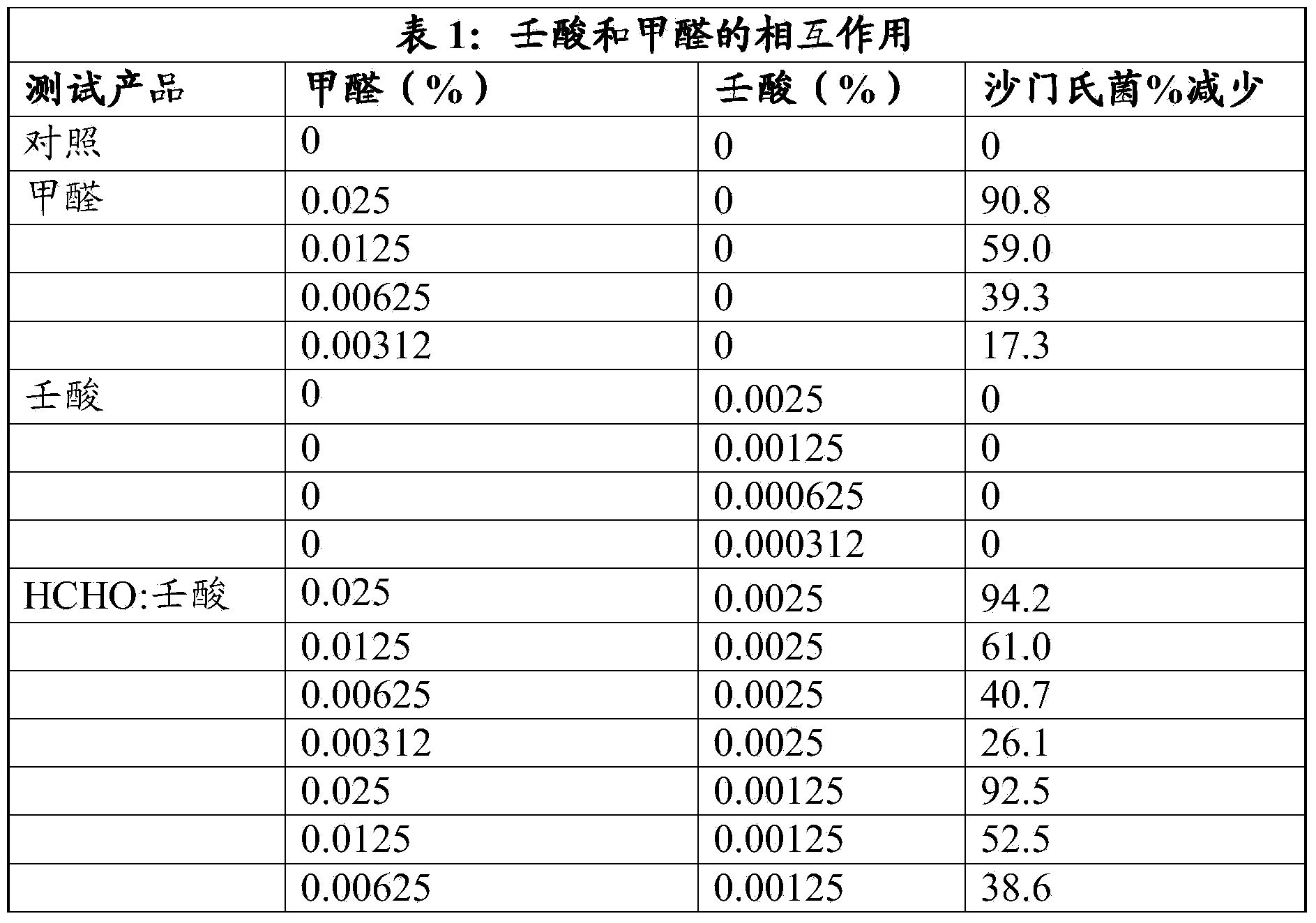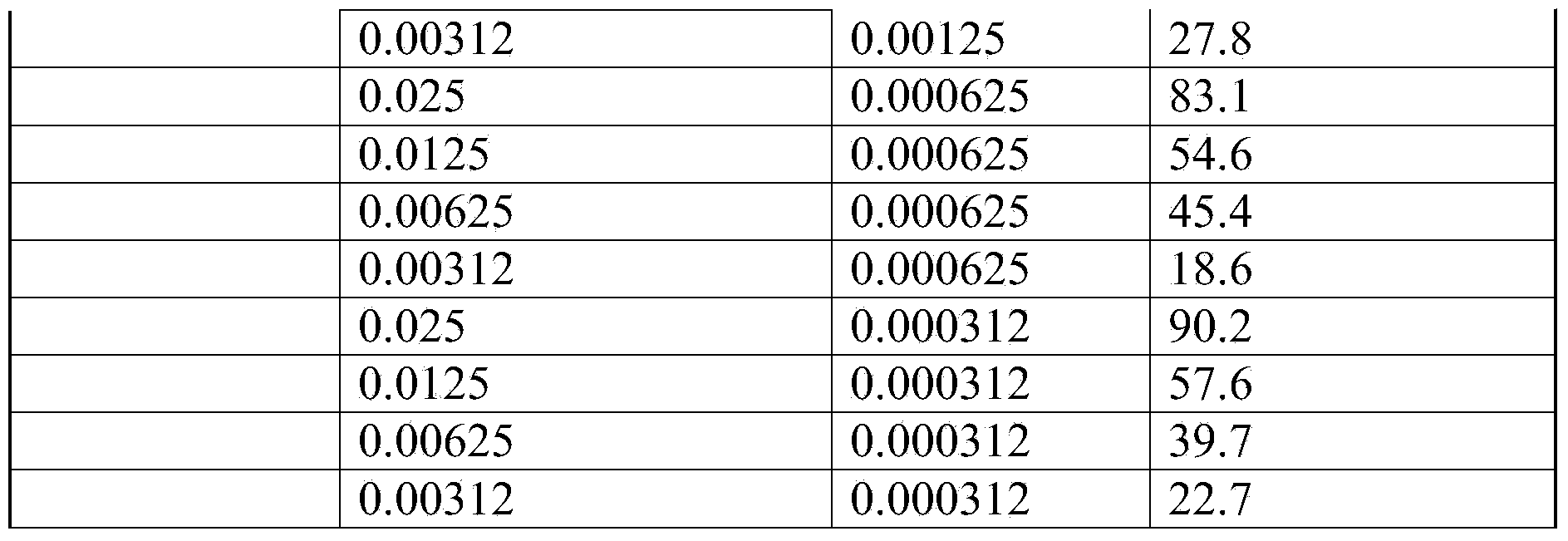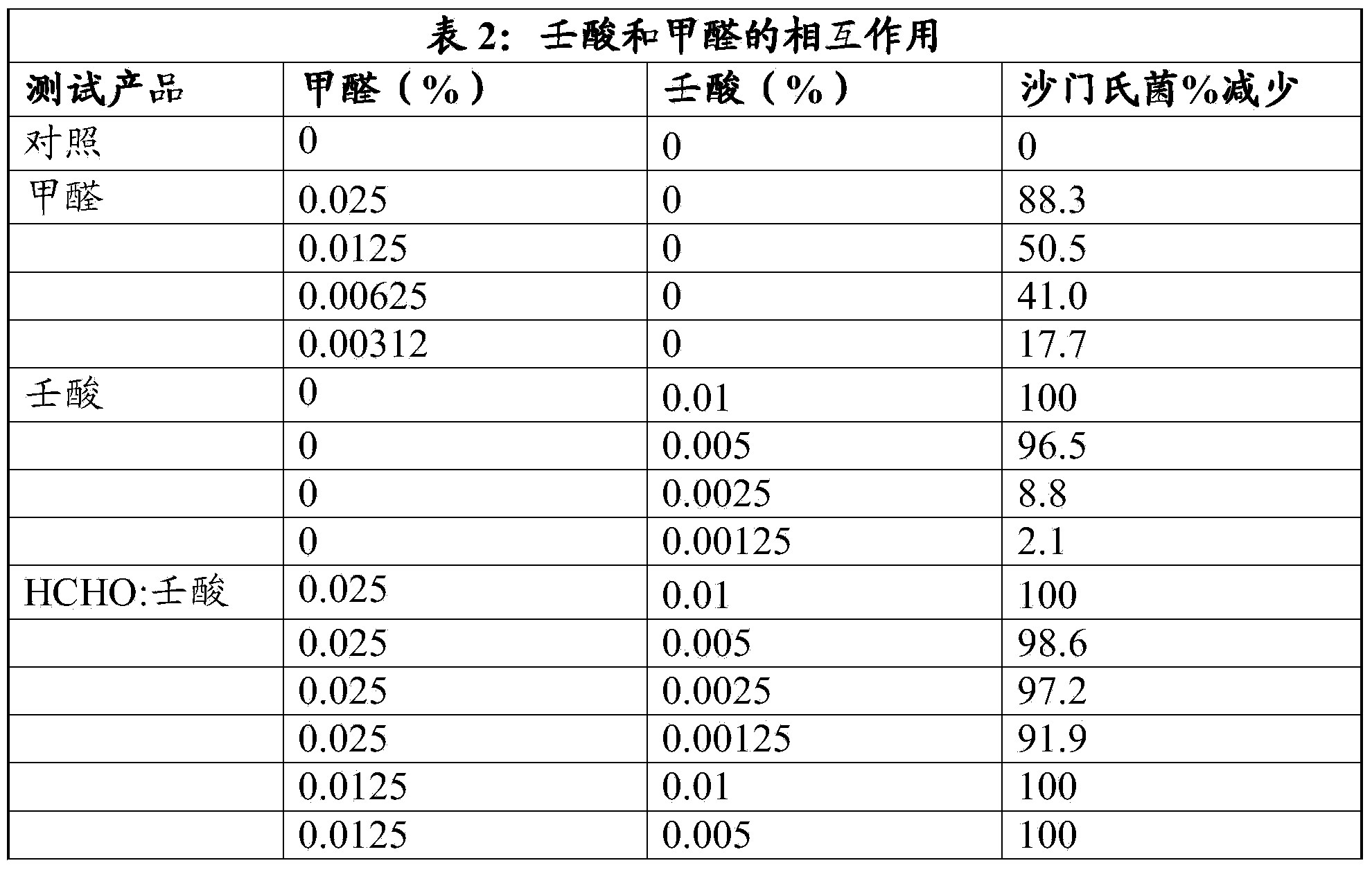Antimicrobial formulations with pelargonic acid
A technology of nonanoic acid, organic acid, applied in the direction of biocide, animal repellent, plant growth regulator, etc., can solve the problem of no proposed or observed antimicrobial activity, etc.
- Summary
- Abstract
- Description
- Claims
- Application Information
AI Technical Summary
Problems solved by technology
Method used
Image
Examples
Embodiment 1
[0067] Add formaldehyde and / or nonanoic acid to the test tubes at the concentrations indicated in Table 1. The solution was vortexed for 10 seconds to ensure mixing. There were three replicate tubes for each treatment. A suspension of Salmonella typhimurium (10 3 cfu / ml, ATCC #14028) were added to three tubes containing each formulation. The above solutions were vortexed, incubated at room temperature for 24 hours and plated on SMA (Standard Method Agar) for 24 hours before counting Salmonella colonies.
[0068] The potency of each formulation, as a percent reduction compared to its control value, is shown in the table below.
[0069]
[0070]
[0071] Dose-response curves for formaldehyde and formaldehyde:nonanoic acid treatments were observed. Pelargonic acid was not bactericidal at the highest dose tested. Pelargonic acid at 0.00125-0.0025% did show formaldehyde-enhancing potency.
Embodiment 2
[0073] Add formaldehyde and / or nonanoic acid to the test tubes at the concentrations indicated in Table 2. The solution was vortexed for 10 seconds to ensure mixing. There were three replicate tubes for each treatment. The suspension of Salmonella typhimurium (10 3 cfu / ml, ATCC #14028) to three tubes containing each formulation. The above solutions were vortexed, incubated at room temperature for 24 hours, and plated on SMA (Standard Method Agar) for 24 hours before counting Salmonella colonies.
[0074] The potency of each formulation, as a percent reduction compared to its control value, is shown in the table below.
[0075]
[0076]
[0077]Dose-response curves for formaldehyde, nonanoic acid and formaldehyde:nonanoic acid treatments were observed. 0.00125-0.0025% pelargonic acid had no significant effect on the reduction of Salmonella. However, when these levels of pelargonic acid were mixed with formaldehyde, the bactericidal efficacy of formaldehyde was enhanc...
Embodiment 3
[0079] As shown in Table 3, five formulations were prepared for in vitro studies. Formulations were added to test tubes at concentrations of 0.01% and 0.05%. The solution was vortexed for 10 seconds to ensure mixing. There were three replicate tubes for each treatment.
[0080]
[0081] The suspension of Salmonella typhimurium (10 4 cfu / ml) to three tubes containing different dilutions of each formulation. The tubes were vortexed, incubated at room temperature for 24 hours, and then plated on SMA (Standard Method Agar) for 48 hours before counting Salmonella colonies. The efficacy of each formulation is reported as a percent reduction compared to its control value and is shown in the table below for each formulation.
[0082]
[0083] 10% nonanoic acid increased the efficacy of trans-2-hexenal.
PUM
 Login to View More
Login to View More Abstract
Description
Claims
Application Information
 Login to View More
Login to View More - R&D
- Intellectual Property
- Life Sciences
- Materials
- Tech Scout
- Unparalleled Data Quality
- Higher Quality Content
- 60% Fewer Hallucinations
Browse by: Latest US Patents, China's latest patents, Technical Efficacy Thesaurus, Application Domain, Technology Topic, Popular Technical Reports.
© 2025 PatSnap. All rights reserved.Legal|Privacy policy|Modern Slavery Act Transparency Statement|Sitemap|About US| Contact US: help@patsnap.com



